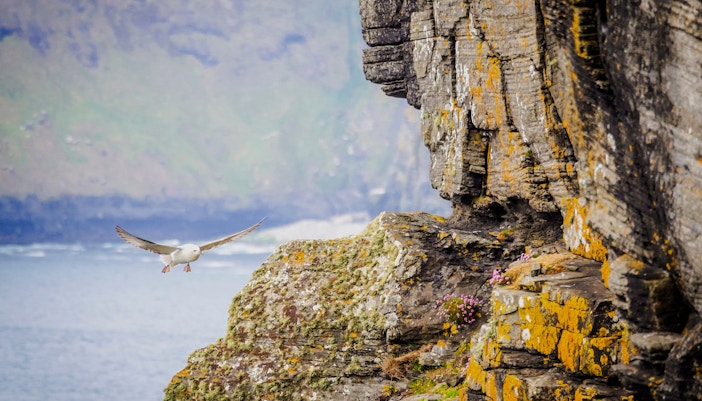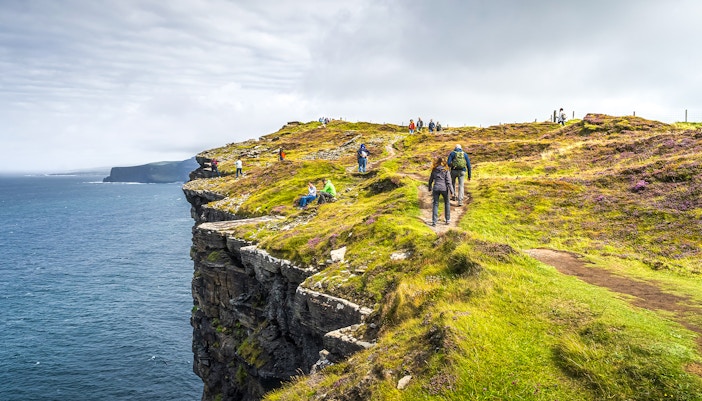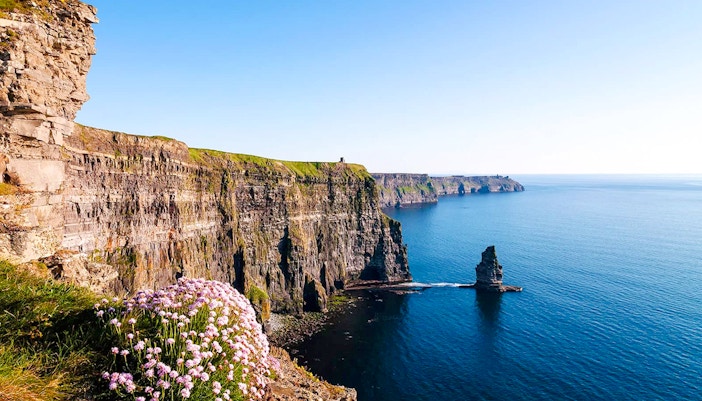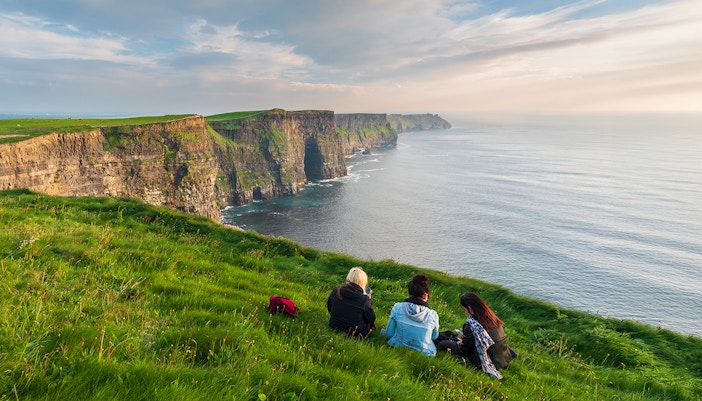If available, join a 45-minute guided session near O’Brien’s Tower, where experts point out seabird colonies and share fascinating facts. Binoculars are available to borrow, making it perfect for families and beginner birdwatchers.
Unique experience and must-do activities at Cliffs of Moher

Bird-watching platform tour

Sea-level cruise and marine-life spotting
Sail beneath the towering cliffs on a one-hour boat trip, where you might see seals lounging on rocks or dolphins and basking sharks gliding through the summer waters below.

Cliff-top wildlife walk with audio guide
Take a peaceful two-kilometre self-guided walk along the cliffs with an audio guide that brings local birdlife, wildflowers, and coastal geology to life through short, easy-to-follow storytelling stops.

Photography hotspot session at sunrise
Book early-morning access to capture the cliffs in golden light. Watch seabirds take flight as the sun rises over the Atlantic—an unforgettable experience for any nature photographer.

Junior explorer kids’ activity pack
Pick up a fun explorer pack at the Visitor Centre, complete with binoculars, puzzles, and nature clues. Kids can follow along the trails while learning about the cliffs’ wildlife and habitats.
